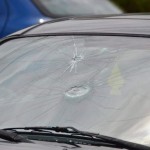Nova Scotia Power is excited to once again announce the launch of the OspreyCam.
Each summer, the live webcam gives a bird’s eye view of Ethel and Oscar, a nesting osprey pair in Nova Scotia.
Last year, the webcam attracted over 200,000 views from May to October.
Through the OspreyCam, viewers can glimpse the nest building, egg laying, incubation, hatching and rearing of osprey chicks. Nova Scotians and wildlife enthusiasts worldwide can watch the ospreys via Nova Scotia Webcams website at:
www.novascotiawebcams.com/ospreycam.
The OspreyCam is part of a long-standing relationship with the Museum of Natural History. The museum plays a
significant role by promoting Nova Scotia’s natural landscape and is happy to answer any osprey questions via social
media through the hashtag #OspreyCamNS.
“The OspreyCam is an opportunity to observe the daily habits of our provincial bird in its natural habitat,” said Jeffrey
Grey, Curator, Visitor Experience and Exhibitions, Nova Scotia Museum of Natural History. “It’s a great way to bring
nature into our homes and spark curiosity.”
In the early summer months, osprey nests are a common sight on the tops of power poles and transmission towers
across the province, as these structures provide an ideal vantage point. In some cases, nests built near powerlines can
cause a safety risk to the osprey and potentially cause power outages to customers.
For 40 years, NS Power has worked with the Nova Scotia Department of Lands and Forestry (DLF) to protect the osprey,
a once endangered species, through the Osprey Management Program. Employees work with DLF to monitor and manage nests and in some cases move threatened nests to safer nesting platforms. Relocating the nests also ensures service reliability for customers.
“So far this year, we’ve moved nine osprey nests to a safe distance from powerlines,” said Glenn Goudey, Environment Manager, NS Power. “Our goal is always to protect the osprey and disturb the birds as little as possible particularly during the most critical time periods. If an active nest is determined to be at risk, mitigation measures including
trimming, installation of cover-up, or relocation as part of our Osprey Management Program.”
Ospreys return to the same nest year after year, so nests are always relocated to platforms near to the original site.
.
Source : Media Release



